Images of broken light which dance before me like a million eyes.
They call me on and on across the universe.
– The Beatles, Across the Universe, 1969
Two pictures: the Large Hardon Collider and the ouroboros
If you try Googling some images of the Large Hadron Collider (LHC) something interesting happens. Sharing the invisible grid of the digital interface are two different shots: the first, built on a Renaissance-style perspective layout, seems to enter the underground arteries of the world’s largest particle accelerator, condensing its complexity into a geography of conduits, platforms, scaffolding and panels that seem to come straight from the pen of a cyberpunk writer; the second, in apparent opposition, is a bird’s-eye view of Geneva and the surrounding area, subdivided by the defined perimeters of the plots of land around the Swiss town near which CERN (Conseil européen pour la recherche nucléaire) is located: this is the world’s largest laboratory for particle physics, home of the LHC and a leading reference in quantum physics studies on the composition of matter. Unfolding in this second image is also a large graphically added circle – invisible to the naked eye – captured in its entirety as it passes indifferently through most of the perimeter above it: this is the 27 km circumference of the LHC, which after the tangle of conduits and conductors of the first internal view is shown in its real and symbolic totality, enclosed in the shape of the circle.
But what exactly is the Large Hadron Collider? And why start here?
It is a large infrastructure designed with the objective of inducing a collision between two beams of particles, made to travel at a speed close to that of light and guided in turn by a strong electromagnetic field generated and maintained by superconducting magnets. By doing so, the collision makes it possible to recreate the physical conditions that were configured a fraction of a second after the Big Bang, when the deflagration started the massification of elementary particles. An attempt, this one, to reproduce the Universe in the laboratory. It is in this sense that the research at CERN and the LHC, in addition to playing a leading role in the quantum physics story of the last century, is part of a much older trajectory that transcends the temporal scanning of epochs: the one dictated by the desire to discover the most unfathomable mysteries of matter, the universe and life. Like a boomerang that always returns to its starting point, the new technologies used in the Geneva laboratory convey issues that are in fact primitive: a web of complexity in which the ancient instruments of knowledge symbolically coexist with the cutting edge, placing the Large Hadron Collider at the apex of this great and invisible genealogy of mysteries and endeavours.
‘Curiosity is as old as humankind, and it is CERN’s raison d’être’: this is how it reads on the laboratory’s website. These are the words written before every popular lunge into quantum physics and the explanation of revolutionary concepts such as the Higgs Boson and antimatter (both discovered and confirmed in the Centre’s research) because it is in curiosity that every calculation, every instrumentation and experiment, finds its matrix.
As a visual culture scholar, I would like to focus on this last feature. My relationship with physics is an amateur one, based on the poetic fascination and imaginative possibilities of the discipline rather than its concrete methodology, of which I only possess a few literary notions. Considering this, I try to think of CERN as an aesthetic space: powerful, ancient, contemporary, unactual and therefore ambitious. A space where the two initial images that initiated this attempt come to the rescue: the underground facility and the aerial expanse, the rationality of the internal instrumentation in contact with that of the circular form. Two framings that can perhaps also testify to a coexistence of times that meet as they amalgamate their boundaries: the horizontal time of research, made up of trial and error, and the cyclical time in which the desire to know is periodically repeated in forms always equal and always different. Looking at the circle of the second image from above I think, among the innumerable symbolic stratifications of this figure, of the ouroboros: an image of a dragon or snake biting its tail, creating a circumference without beginning or end. Having entered the Western tradition starting with Egyptian iconography and the Greek magical tradition, then migrating into Gnostic doctrines, Norse mythology and alchemy, the ouroboros has always been a symbol of the cyclical nature of things, of the totality of the world and of universal energy always stretched between self-consumption and self-renewal. Descending underground, we then return to the time of dates, which now seem like oscillating particles in a larger flux: sedimented in this recent interval are 1954, when CERN began to be built; 1957, when the first particle accelerator called Synchrocyclothon was started up; and 10 September 2008, when the Large Hadron Collider worked for the first time.
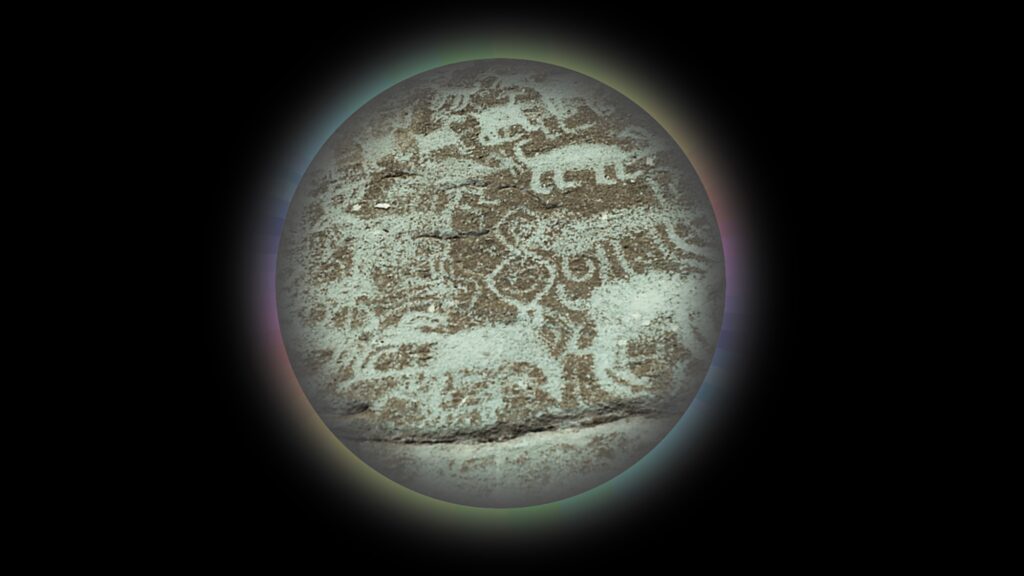
The two initial images, when observed simultaneously, allow one to adopt a flush gaze. It is as if the eye was split in two: now the below is with the above, while the investigation of the world’s matter resonates in the form of an ever-repeating desire for knowledge.
Matter and form, but also the form of matter: beyond nuclear physics, CERN is an aesthetic laboratory.
Collision as aesthetic framework: the Arts at CERN project
The Arts at CERN project was born as an expression of this sensitivity, unfolding in that interval where the rationality of science meets the processuality of art, while both collide, forgetting where one ends and the other begins. Here is a hybrid projectuality that since the foundation of the program (2011) continues to pursue the questioning of the matter of the world, so complex and mysterious that any rigid disciplinary boundary seems to be partial and ineffective. The answer – or the expansion – of the great questions about the universe can only arise in a plural interweaving of disciplines and languages, thus creating the possibility for a layered, multimedia and multicultural aesthetic fabric.
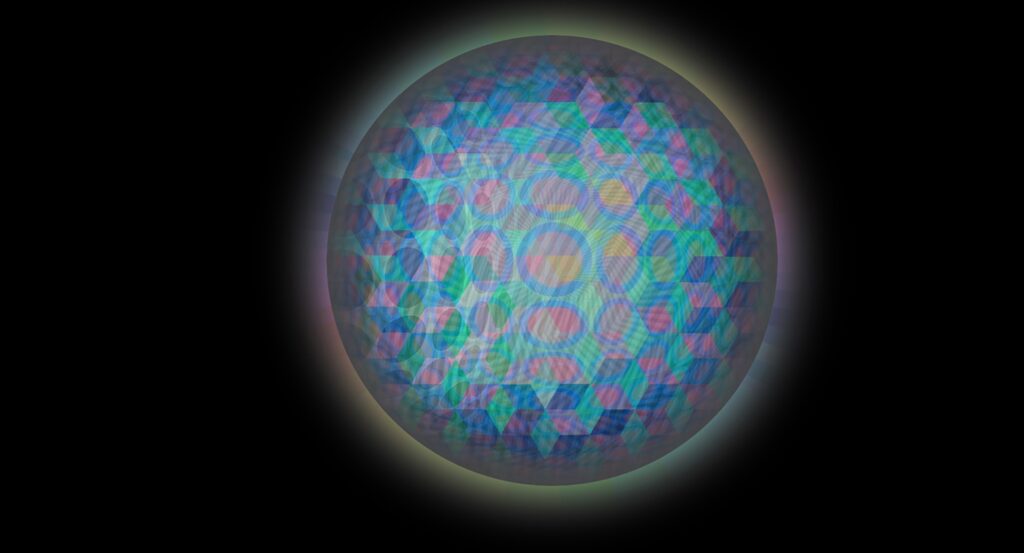
Arts at CERN, directed by Mònica Bello and centred on the Laboratory’s attendance by artists and creative people in constant dialogue with the Centre’s scientists, embodies this complex conversation between different disciplines and cultures through an international program of exchanges and collaborations. ‘Collide’, an annual three-month residency born out of the three-year partnership between CERN and a city chosen on a case-by-case basis – with the aim of enhancing the dialogue between the Geneva Laboratory and local institutes – was launched in 2011 as a pilot project that over the years has linked CERN to institutions such as the Ars Electronica Center in Linz, the FACT (Foundation for Art and Creative Technology) in Liverpool and the Barcelona City Council. Central to this cognitive ecosystem, the ‘Collide’ project is then complemented by a program of commissions – Art Commissions – which since 2017 has been supporting artists in the development and production of new works following their stay at the Laboratory, as well as a palimpsest of exhibitions and events, which began in 2018, aimed at presenting the interdisciplinary experiences configured during the residency period, often bringing together the languages of different artists to construct broader and more complex reflections. One might say that it is not only the particle beams of the Large Hadron Collider that ‘collide’ with each other, but also different intuitions, geographies, disciplines and speculations, brought together in concert as they expand the very concept of ‘research’, shaping its possibilities with ever-new outcomes. It is as if the subatomic encounter that takes place in the accelerator-ouroboros propagated to larger scales, constituting, in addition to a physical process, a wide cognitive framework: colliding and experiencing, moving in that sensitive interval that is created as soon as two essentialities meet, and finally giving form to an entirely new cognitive mass.
That of knowledge is a complex matter, especially when, as in the case of Arts at CERN, analysis is reflected in speculation, the plunge into physical matter translates into the power of vision, and science becomes art (and vice versa). But art – the concept of ‘art’ as distinct from craftsmanship and technical expertise alone – is actually born in the space of such intersections. The anthropologist of images Hans Belting (1935-2023) speaks of it in these terms, not by chance in one of his texts on Flemish art, which built its difference from the structural narrativity of the coeval Italian pictorial renaissance starting precisely from the scientificity of vision. In Lo specchio del mondo, referring to the figure of Jan Van Eyck, Belting writes:
The new metaphors made the painter an inventor who could no longer be content with the simple reproduction of the physical phenomenon. In an oft-quoted letter from 1435, the Duke of Burgundy, Philip the Good, wrote that no one at that time surpassed his court painter Jan Van Eyck for ‘art and science’. […] At that time, ‘art’ was the term used for craftsmanship and artistic technique […] In contrast, the ‘provisional’ term science (‘science’) at that time denoted precisely what we today call ‘art’: it was ‘science’ that made it possible to surpass craftsmanship and made the painter a scholar who claimed his place among men of culture (1)
Again art and science, woven together in the wake of a common desire. As in the case of the Laboratory, that of Arts at CERN is a cleavage of the matter of the world operated through a total gaze: a milieu where the knowing process becomes an “understanding” one. A word, this one, whose Latin etymology has a crucial value in this case: “cum” + “prehendere”, meaning “to hold together, to enclose”. This elegantly condenses – in the ever-changing “understanding” of the mysteries of reality – the heterogeneity of this project and of the artistic practices that have constituted it so far. Among them is the research of Suzanne Treister (b. 1958, London UK), winner of the 2018 Collide Award, in which this “understanding” is an ever-open, expanded attempt that retains within itself that aesthetic turbulence proper to what is impossible to encapsulate in a single definition. Her gaze oscillates between an investigation of origin and speculation towards a perhaps not too distant future: in between, techno-science meets alchemy and metaphysics, science-fiction and art history. That of Treister is a multidimensional, multimedia and multidisciplinary practice in which the dialogue widens as the architecture of knowledge expands, taking in the radical uncertainty of a vision.
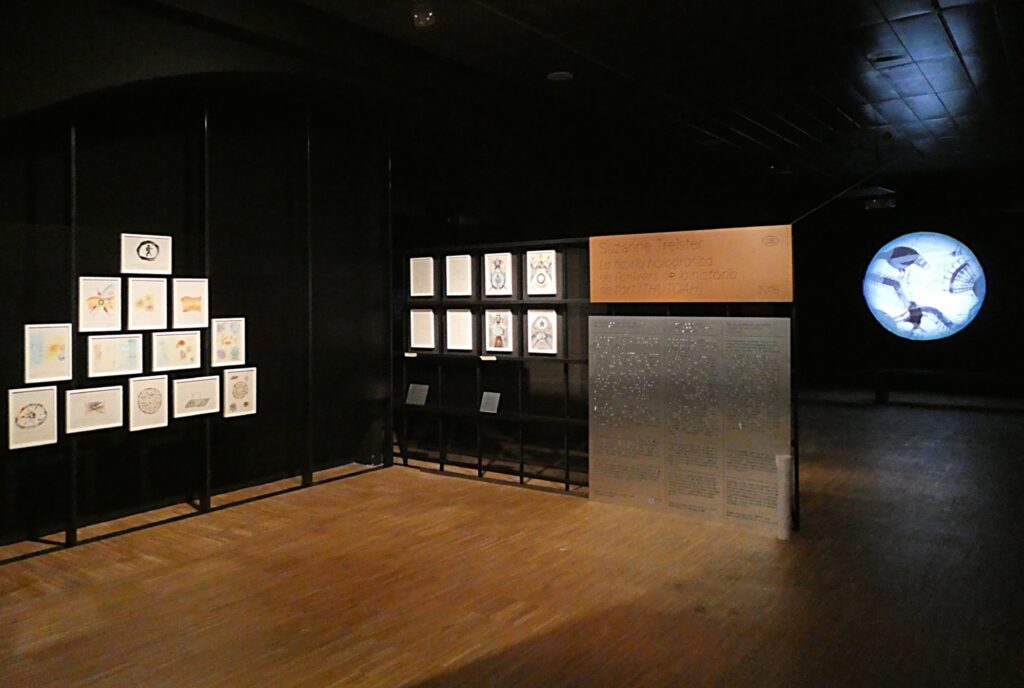
A bigger plot: Suzanne Treister between holographic universes and scientific imaginations
There is a kind of resonance between the collision of particle beams inside the Large Hadron Collider and Suzanne Treister’s research: a shared tension in wanting to reveal and dilate the possibilities of the manifestation of space and time. In both cases, the scene of an observation is outlined step by step, with the eyes resting on an infinitely expanded ‘object’ of elusive perception. If, in the case of the LHC, this aesthetic elusiveness arises in the mystery of the subatomic textures of matter, Suzanne Treister instead operates a reversal, as if this complexity were projected inside, into the particles of the gaze itself, dilated to the extreme until it resounds with a mystical tonality that lets in more temporalities and spaces – physical, spiritual and technological – until it reaches the abyssal exploration of the unconscious. In a nutshell: from the gaze on the universe to the universe in the gaze, through a method of observation that never settles into a consolidated process.
Since the beginning of the 1990s, Treister has considered technology in its most radical imaginative potential: a visionary medial space capable of splitting reality into multiple dimensions, as if the screen of the first computers was already, potentially, a fourth wall to be broken through in order to lose oneself in the folds of a world as fascinating as it is unknown. Just think of Q. Would you recognise a Virtual Paradise? (1992), among the artist’s first projects when Treister created, with a Commodore Amiga computer, fictitious and hallucinatory video game frames, already dense with all those implications – typical of the new-media and grassroots practices of those years – on the future (and still unexplored) social, cultural and political opacities of the technological milieu. Because technology is also, and above all, a metaphysical and cosmological question: the antechamber of a larger and perhaps esoteric plot that Treister’s art allows us to intuit, tracing its ever tense threads between the deepest memory and the most radical speculation.
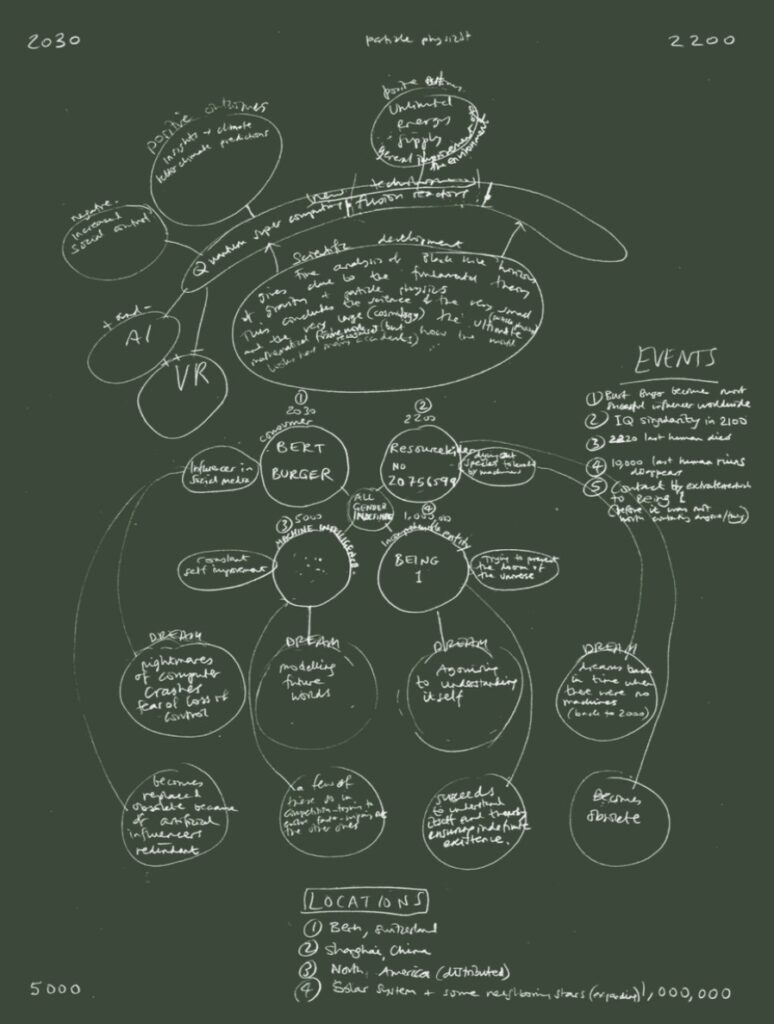
From these coordinates Treister develops, during her residency period at Arts at CERN in 2018, The Holographic Universe Theory of Art History (THUTOAH): an investigation in which the holographic principle – a physical theory according to which the universe is a vast and complex hologram, thus losing its third dimension – collides with art history. Or rather, with the history and anthropology of images: for what is the hologram of the universe if not a great, tremendous and abysmal image? And might not artists have always unconsciously sought, through their creations, to describe this truth? Radically transcending all established historiographic categories, in THUTOAH 25,000 images in chronological order – from cave paintings to contemporary painting – are projected in a video loop at a speed of 25 images per second: the same as the particle beams of the Large Hadron Collider.
The two streams resonate in a single echo, and if at the beginning of this text an attempt was made to translate the LHC and its performativity into images in contact with physical matter, now with THUTOAH precisely the images acquire the status of matter, caught in another conceptual reversal in which they themselves become particles in motion.
Looking at this colossal visual archive, where Treister makes visible the existential and metaphysical totality of homo Pictor, one is reminded of ‘The Library of Babel’ imagined by Jorge Luis Borges in his anthology Finzioni:
The universe (which others call the Library) is made up of an indefinite, and perhaps infinite, number of hexagonal tunnels, with vast ventilation shafts in the middle, surrounded by very low railings. From any hexagon, one can see the lower and upper floors: interminably. The distribution of the tunnels is invariable.(2)
The universe and the library: words that serve as the incipit to the Argentinian writer’s attempt to create an architecture, obviously imperfect and indefinite, of a totality. The images of THUTOAH, together with watercolour works and audio tracks of interviews conducted with scientists at CERN, also take part in this experiment where each individual fragment – the projected images just like the surfaces of Borges’ library – becomes an index of a transcendental space-time, in which the breath of the long duration is intuited. The mystical hypothesis that artists, beyond all intentionality, thus sought to describe a further state of reality also undermines the rigidity of an art history based on progress: a linearity that Treister, borrowing the words written in Storia dell’arte e anacronismo delle immagini by art historian George Didi-Huberman in reference to Walter Benjamin’s thought, takes countershave. In this regard, a specific passage is illuminating:
However, we must surrender to the evidence: only by taking things countershave does one come to reveal the underlying skin, the hidden flesh of things. “Brushing history against the grain” would ultimately be a particularly exasperating expression of the dialectical movement necessary for the resumption – the integral refounding – of a capital problem, that of historicity as such.(3)
Because if the universe is a hologram then time and history must also begin again, and the visual matter of The Holographic Universe Theory of Art History demonstrates, in the same way as physics travelling fast in the Large Hadron Collider, that in every present fragment resides the spark of an origin.
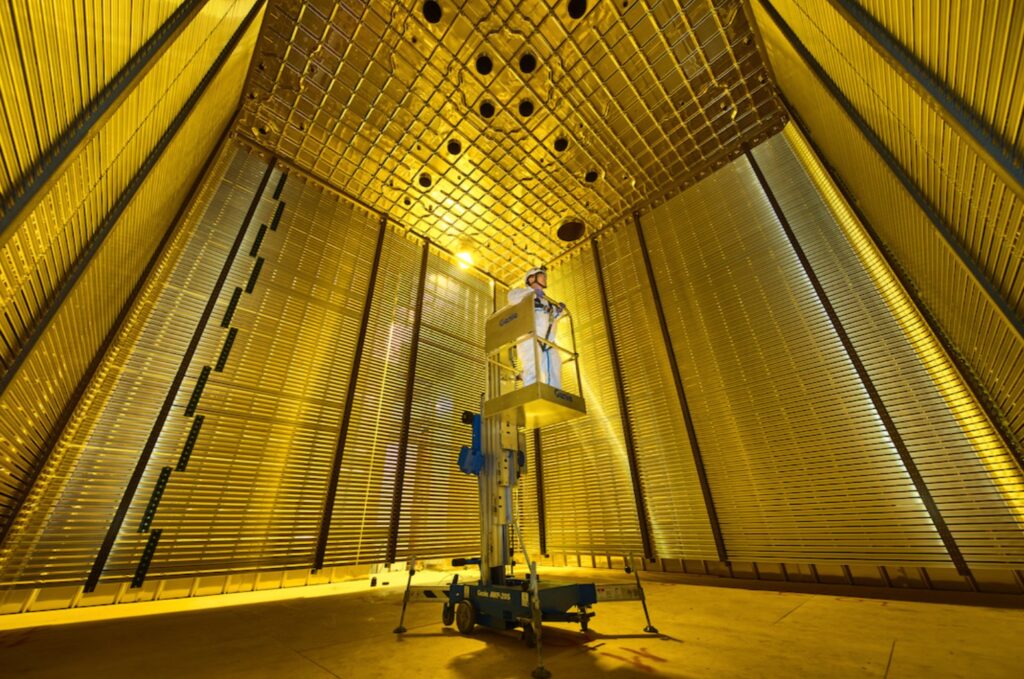
It is precisely by rooting in, and dilating, the present moment that Suzanne Treister, after the ‘Collide’ Residency in 2018, realises another project, this time relating to the Art Commissions section, still within the reality of Arts at CERN. Scientific Dreaming begins in 2022, extending in a certain sense that interweaving of technology, image and speculation already present in THUTOAH: if before the titanic library of images revealed the mysteries of a visual unconscious common to all epochs, now it is the unconscious of CERN scientists themselves that becomes the antechamber of possible visions, through their involvement in a series of science-fiction writing workshops aimed at imagining better futures based on hypothetical scientific revolutions.The link with the unconscious sphere is present from the pre-design phase, centred on the figure of CERN physicist Wolfgang Pauli (1900-1958) and his relationship, which later became a spiritual partnership, with psychoanalyst Carl Gustav Jung. Treister starts from one of his books, ‘Dream Symbols of the Individuation Process: Notes of C. G. Jung’s Seminars on Wolfgang Pauli’s Dreams’, pressing in its pages wild flowers collected nearby the Large Hadron Collider: vegetal matter in contact with psychological matter; but also, and again, the exchange between science and art embodied in the Pauli-Jung relationship. Hence the conceptual basis that migrates into the exploration of the unconscious by fourteen Geneva scientists, authors of as many narrative diagrams later remodelled to create the framework of fourteen science-fiction short stories, that will be published in the summer of 2023. Looking at the diagrams, it now seems as if the imagination itself is distilled into small particles of thought, found colliding on the page as they burst into the dream of a further future. In Scientific Dreaming, technology and science become the coordinates of boundless speculation, providing yet another testimony to how disciplinary boundaries can blur into a shared desire – as deep and unfathomable as the unconscious – for knowledge of the mysteries of reality.
The collaboration between Suzanne Treister and Arts at CERN demonstrates all this: that it is through collision, thought in all its facets, that one can generate what previously seemed unexpected.
Here is what we read in the synopsis of the story of experimental particle physicist Tamara Vazquez Schroeder:
How can a discovery in fundamental physics affect each person? In the complex mesh of conscious and subconscious threads of four apparently disconnected individuals, the news of a colossal physics breakthrough at the Large Hadron Collider at CERN resonates with their deepest essence in diverse forms. A story of wonder, dreams and the intrinsic connection of humanity in their pursuit of truth.
Right now we are just floating in a tremendous wonder.
References
1_ H. Belting, Specchio del mondo. L’invenzione del quadro nell’arte fiamminga (1994), Carocci Editore, Roma 2016, p. 85. Passage translated from Italian by the author.
2_ J. L. Borges, Finzioni (1956), Adelphi, Milano 2003, p. 67. Passage translated from Italian by the author
3_ G. Didi- Huberman, Storia dell’arte e anacronismo delle immagini (2000), Bollati Boringhieri, Torino 2007, p. 83. Passage translated from Italian by the author.







